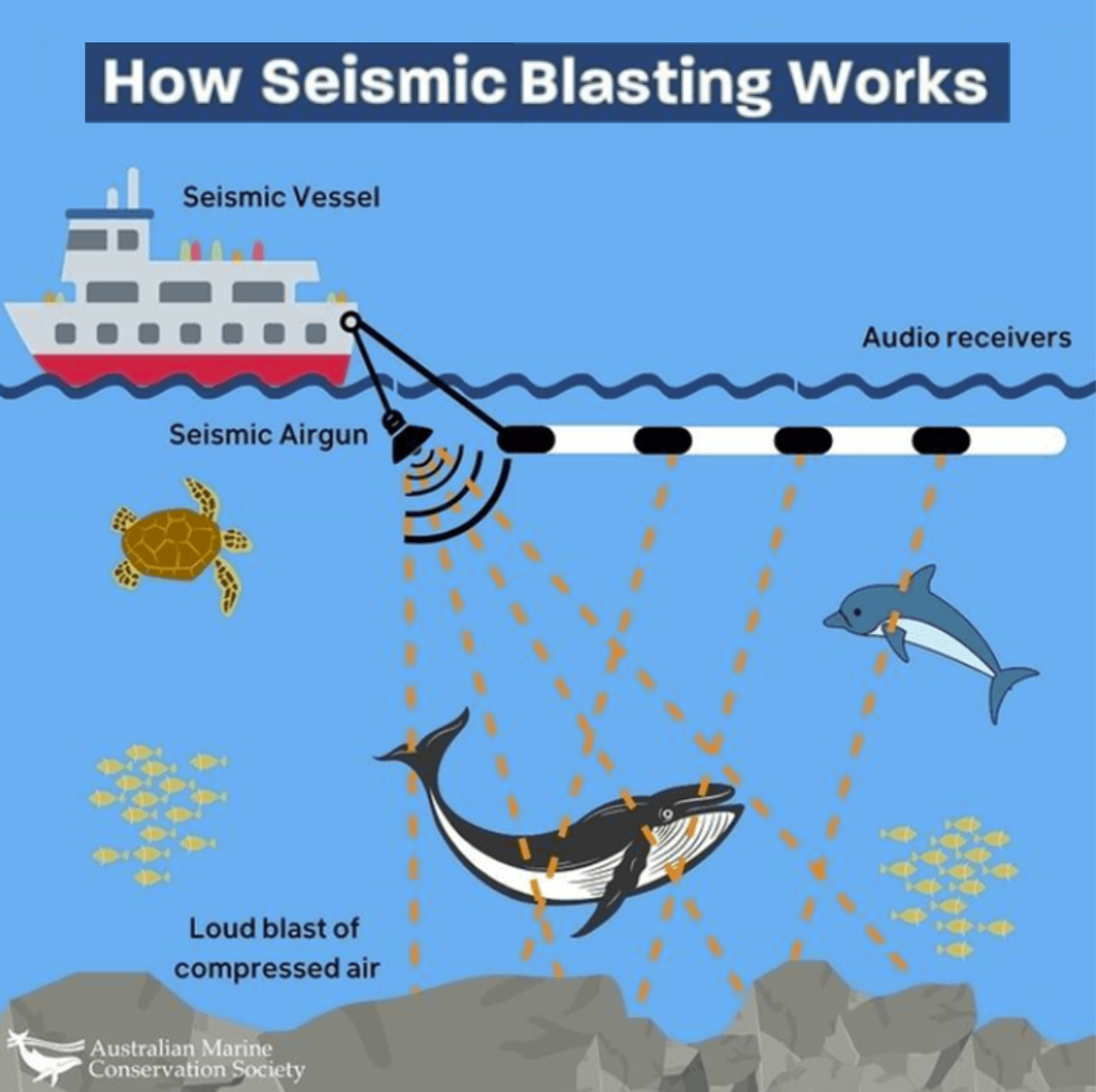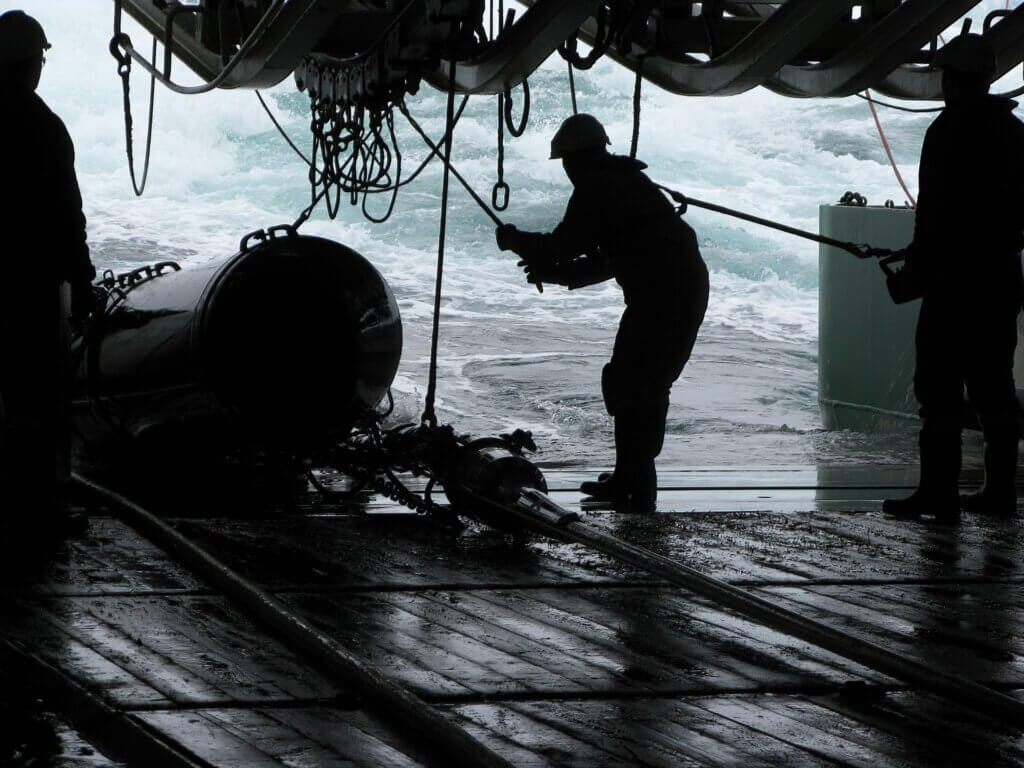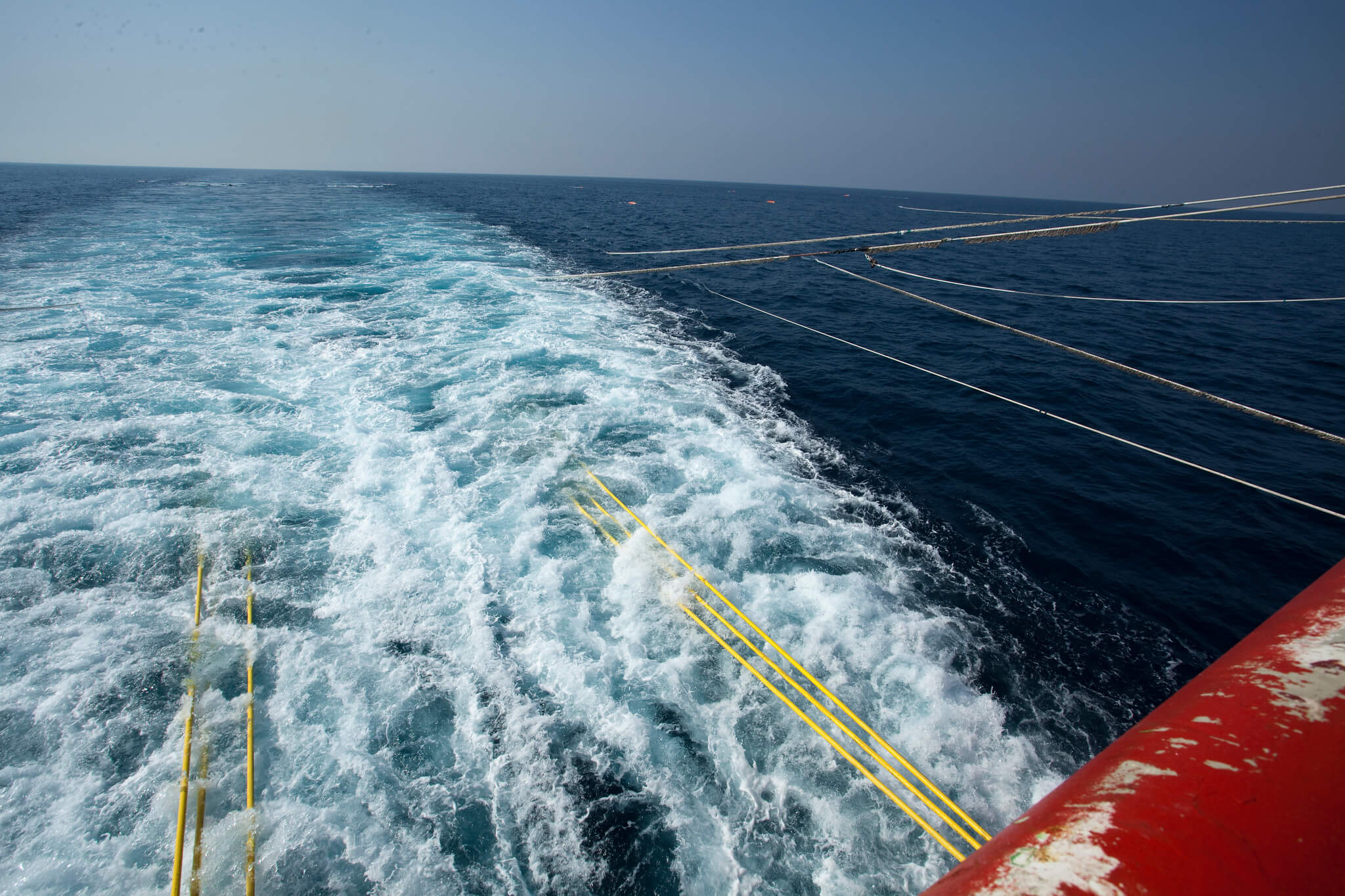Here is everything you need to know about the cheap and reckless Special Prospecting Authority (SPA) permits used by companies to seismic blast our oceans on the hunt for oil and gas.
What is a Special Prospecting Authority (SPA)?
A Special Prospecting Authority (SPA) is a specific type of permit that allows companies to buy access to large areas of our oceans to use seismic blasting to search for oil and gas below the seafloor.
Special Prospecting Authorities allow companies a quick and cheap way of bypassing the usual annual bidding process to buy up vast areas of ocean that are not currently being exploited for oil and gas exploration, or mining.
Each Special Prospecting Authority permit is assessed in isolation, meaning the Commonwealth Government’s offshore regulator (NOPSEMA) does not take into consideration the cumulative impact of multiple seismic blasting projects on ocean ecosystems or marine life. Any previous seismic blasting conducted in a given location is not considered in the environmental impacts of any proposed seismic blasting in that same area.
Special Prospecting Authority permits allow exploration companies to conduct seismic blasting in habitats of endangered species such as blue whales and in other critical ocean habitats. There are at least six SPA permits either pending or active across Australia as at September 2024.
One of these applications by CGG, if allowed, would conduct seismic blasting off the coast of Victoria near Warrnambool and the Apollo Marine Park. The seismic blasting would be right next to critical calving grounds for the endangered southern right whale and inside key foraging habitat of the endangered pygmy blue whale in the Otway Basin.
What can a company do under a Special Prospecting Authority permit?
A Special Prospecting Authority allows a company to conduct seismic blasting. It does not permit test drilling for oil and gas.
What is seismic blasting?
Seismic blasts are how the oil and gas industry surveys the ocean floor. Seismic vessels (boats) tow an array of airguns and audio receivers (hydrophones) behind them in the water. These powerful airguns fire loud blasts of compressed air every 10 to 15 seconds, 24 hours a day.
The sound waves produced penetrate deep into the seabed, and those that bounce back to the sea surface are detected by the audio receivers. From the sound patterns detected, companies can work out the most likely place to find oil and gas reserves trapped in the ocean bedrock. The next step is exploratory drilling.
These blasts are among the loudest human-made sounds in the ocean, just short of those caused by explosive devices, and have a devastating effect on marine life.

What happens with the seismic blasting survey data a company collects under Special Prospecting Authority permits?
Companies using a Special Prospecting Authority are able to sell the survey data they collect using seismic blasting. The project proposed in the Otway Basin by CGG will sell information from their seismic blasting surveys to fossil fuel businesses, carbon capture and storage projects or other businesses prepared to purchase the data. This information is held by the company for 15 years as commercial in confidence before it is publicly available.
This period of commercial in confidence is one of the reasons we see so many companies bidding to conduct seismic blasting over the same areas within a year or two of each other – essentially double-dipping in profits by collecting the same mapping of what lies below the seafloor, at the expense of marine life that is subject to repeated seismic blasting.

Image: Silhouettes of persons recovering source (gun) array on seismic survey vessel. Sources (gun) are used to produce underwater acoustic sound waves with high-pressure air. Location: Norway.
How long do Special Prospecting Authority permits last for?
A Special Prospecting Authority is valid for 180 days. After that 180 day period expires the company may reapply for another Special Prospecting Authority in the same areas to continue their seismic blasting exploration for fossil fuels.
A cancelled SPA application from TGS/SLB-Schlumberger stated in public consultation processes that they planned to apply for multiple Special Prospecting Authority permits in the 45,000 sq km area of ocean between Tasmania and Victoria they planned to conduct seismic blasting in. The application for seismic blasting by TGS/SLB-Schlumberger was projected to start in late 2023 and end in September 2027… which means they must have planned on applying for a lot of 180 day Special Prospecting Authority permits!
Thankfully, following years of community opposition, the TGS/SLB proposal was cancelled in September 2024. The cancelled TGS/SLB proposal is an excellent example of how important it is to stop these projects before they start.
How many Special Prospecting Authority permits are available in Australian waters?
Special Prospecting Authority permits can be applied for and sold to seismic blasting companies at any time of the year, and are not capped. Special Prospecting Authority permits are used by companies to exploit areas of ocean that other companies have not already obtained exploration or production permits for.
How much do Special Prospecting Authority permits cost?
Each Special Prospecting Authority permit costs $8,250 and is valid for 180 days of operation. After that period expires, the company can apply for another permit without the previous Special Prospecting Authority permits being taken into consideration as each permit is considered in isolation.
How do we know what companies have a Special Prospecting Authority permit at any point in time?
The only way to know which companies are applying for a Special Prospecting Authority permit, or working under one is:
- Through the National Offshore Petroleum Safety Environment Management Authority (NOPSEMA) website to see who is applying for a Special Prospecting Authority, or
- checking the government’s National Offshore Petroleum Titles Permit Administrator (NOPTA) to enquire which companies have been given a Special Prospecting Authority.
Both of these websites have limited information and limited access to that information for people who are not part of the petroleum industry.
The Australian Marine Conservation Society is monitoring new proposals for seismic blasting and new offshore oil and gas proposals to campaign to prevent them from proceeding. We could not do this without your support. To stay up to date on how to help us stop seismic blasting and Special Prospecting Authorities, you can sign up to receive our campaign updates.
Who is responsible for approving Special Prospecting Authority permits?
The National Offshore Petroleum Safety Environment Management Authority (NOPSEMA), a regulator overseen by the Australian Government, is the first port of call for companies applying for a Special Prospecting Authority.
Companies have to submit an Environmental Plan (EP) to the regulator for review and approval. In that application, they need to outline what types of exploration permits they are applying for. There can be applications that use Special Prospecting Authority permits in combination with other types of permits called Access Authorities (AA) or Scientific Investigation Consent (SIC) for one project if there are some areas that have existing titles or leases in them.
If NOPSEMA approves the Environmental Plan it then progresses to the federal government’s National Offshore Petroleum Titles Permit Administrator (NOPTA). NOPTA acts as the administrator for the Australian Government and has the power to give Special Prospecting Authority permits. NOPTA is also the authority that conducts the financial and legal transaction to give the applying company a permit
NOPSEMA and NOPTA are both government bodies answerable to the Federal Resources Minister, Madeleine King. Minister King has the power to refuse an application for permits for oil and gas exploration or production. As the Minister responsible for the law under which these permits sit, Minister King can act to abolish Special Prospecting Authorities to clean up the industry and keep some of the largest and most damaging seismic blasting projects out of Australian waters.
Are members of the general public allowed to enter ocean areas during the 180 days they are under a Special Prospecting Authority?
There are exclusion zones put around seismic blasting operations of (on average) 5 km which stops any other vessels from entering into that area. Some exceptions may be made on a case-by-case basis for certain industries passing through when blasting is not taking place. It is dangerous for any person to be in the water within 5 km of a seismic blasting operation as the impacts on the human body from these blasts can cause damage.
What kind of environmental assessment is done before a seismic blasting company is given a Special Prospecting Authority permit?
A company applying for a Special Prospecting Authority provides an Environmental Plan (EP) to the regulator which usually gives varying degrees of information that includes:
- the area they plan to conduct seismic blasting in
- what species they know to be in that area
- some information on possible fuel and oil spills that can happen while blasting
- what sort of fuel, waste and sewage they expect to be expelling from the research ships, and
- the expected impacts on species who are not able to get out of the way such as plankton including krill (seismic blasting is lethal to both).
The Environmental Plan often explains how the seismic blasting company will try to minimise impacts and look for endangered species, measured against budget and profit margins.
Unfortunately, there are many provisions in Australia’s regulatory and legislative system that allow these projects to cause harm to our marine life. One such provision frequently used in Environmental Plans and by NOPSEMA is that the company involved attempts to make risk As Low As Reasonably Practicable (ALARP). This allows a low bar to be set on harm minimisation to the environment and marine life based on what the seismic blasting company thinks is reasonable damage to our oceans and marine life, and what they are willing to spend to reduce these harms.
When a company is proposing seismic blasting over known whale and dolphin habitat, they refer to a flawed section of the national Environmental Protection Biodiversity Conservation (EPBC) Act called EPBC Act Policy Statement 2.1 – Interaction between offshore seismic exploration and whales.
This section of the Act allows seismic blasting over endangered whale habitat with a few provisions such as having a Marine Mammal Observer (MMO) standing on a boat looking for whales, and recommendations for increased observation for whales, which are not enforceable. If, as often happens, the company decides it’s too expensive to be looking for whales via more thorough methods like spotter planes, they do not have to take this effort to achieve ALARP.
This loophole in the EPBC Act and section 2.1 reinforces why we need the EPBC Act to be strengthened so it protects whales and dolphins from seismic blasting. You can add your name to demand stronger nature laws here.
Does the Australian Government’s regulator, NOPSEMA, allow seismic blasting companies to use Special Prospecting Authorities over marine parks?
Yes, many of our marine parks lack adequate protection that stops fossil fuel companies from exploring for oil and gas through seismic blasting and test drilling. The cancelled seismic blasting SPA proposal by TGS/SLB-Schlumberger initially overlapped both the Nelson and Zeehan Commonwealth marine parks off the coasts of Tasmania and Victoria. The CGG seismic blasting SPA proposal is in close proximity to the Apollo Marine Park.
Only a small percentage of marine parks are listed as ‘marine sanctuaries’ and fully protect our oceans from seismic blasting and fossil fuel expansion.
Wait, so not all marine parks provide the same protection for marine wildlife?
They do, but to different degrees. Marine parks have different zones applied to them. Multiple-use zones, for example, allow certain types of commercial fishing. Zones designed to protect the seabed habitat ban seafloor trawling, but might allow line fishing and recreational fishing.
What are the different zones?
- Green zones (also known as marine national park zone, marine sanctuaries, or ‘highly protected areas’) offer a high level of protection for selected areas of high conservation value, like some fish nurseries, seamounts and reefs.
- Yellow zones support activities like fishing and diving, so long as the seafloor is not harmed.
- Blue zones allow a wider range of activities, like commercial industries.

Image: Offshore seismic research vessel guns and cables. Location: Norway.
Are SPA permits assessed differently to other permits?
Unlike other title applications and assessments that NOPTA runs for approving permits for offshore exploration, companies seeking an SPA permit are not assessed as to their ‘fitness and proper standing’ or their criminal history as part of the decision making process. This is because applications for SPA permits are exempt from section 695YB of the Offshore Petroleum and Greenhouse Gas Storage Act 2006 (Cth) (OPGGS Act).
The exemptions include having ‘relevant experience in the industry, prior offences and involvement in criminal or civil proceedings, previous applications that have been refused or titles that were cancelled, debts payable, insolvency, disqualification from management of corporations, and whether under the OPGGS Act the person has made or given false or misleading statements, information, documents or evidence’.
This means that companies who are being investigated for breaching the conditions of a previous SPA by conducting seismic blasting near endangered species can continue to apply for SPA permits to conduct further seismic blasting.
What would happen if Special Prospecting Authority permits were abolished?
The Australian Government must take action and abolish these reckless and cheap seismic blasting permits. This would shut down one of the worst aspects of the industry. Marine life in Australian waters would be given much-needed relief.
Abolishing Special Prospecting Authorities is the first step in stopping vast areas of our ocean being opened up to opportunistic seismic blasting companies repeatedly searching for fossil fuels using seismic blasting, a method known to harm marine life.
Would abolishing Special Prospecting Authorities end all seismic blasting in Australian waters?
No. Seismic blasting could still be carried out under two other types of permits – an Access Authority (AA) and a Scientific Investigation Consent (SIC).
However, abolishing Special Prospecting Authorities would stop some of the largest, hastily run and often most destructive seismic blasting projects from harming marine life in Australian waters.
What are Access Authorities (AA) and Scientific Investigation Consent (SIC) and how are they different from Special Prospecting Authorities?
An Access Authority for seismic blasting may be given over any area of ocean, including an area subject to an existing petroleum or Greenhouse Gas title. This is one of the permits CGG are using for part of their seismic blasting proposal over southern right whale calving grounds where it overlaps with a ConocoPhillips lease for proposed test drilling for gas. Access Authority permits allow multiple petroleum exploration, production, and decommissioning projects to happen in the same area, often piling up the threats to local marine life.
A Scientific Investigation Consent permit gives the holder the ability to carry on petroleum exploration operations during the course of a scientific investigation. The specifics of what activities are permitted in a Scientific Investigation Consent is considered on a case-by-case basis. Approval will generally only be given for drilling stratigraphic holes, not oil and gas exploration wells.
The granting of Special Prospecting Authority, Access Authority or Scientific Investigation Consent permits over an area of ocean does not give the holder an exclusive right over that area. Therefore, multiple Access Authorities or Scientific Investigation Consents may exist over the same area at the same time.
Do we need more seismic blasting projects in our oceans?
No – there have been at least 1,850 seismic blasting surveys in Australia since the 1960s, and over 600 in the Otway Basin alone. Thanks to modern computing techniques, older data can be reprocessed to meet imaging needs, without the need to do any more seismic blasting of the area.
So why is CGG proposing to do more seismic blasting?
The data collected during a seismic blasting survey remains private property of the company owning it for up to 15 years due to ‘commercial in confidence’ regulations. Since the data isn’t publicly available during that time, seismic blasting companies make money by selling the data to one client, then doing more seismic blasting to sell to more clients. This lucrative arrangement also incentivises new seismic blasting projects.
What should we do to take action against Special Prospecting Authorities (SPA)?
The Australian Government must take action and abolish these reckless and cheap seismic blasting permits. This would shut down one of the worst aspects of the industry. Marine life in Australian waters would be given much-needed relief.
The federal Minister for Resources Madeleine King is responsible for overseeing, and giving final approval to, companies seeking to receive seismic blasting Special Prospecting Authorities. Minister King has the power to abolish SPAs and take a step in the right direction to stop the damage from seismic blasting on Australian marine life and ecosystems.
Note: References and sources are hyperlinked.